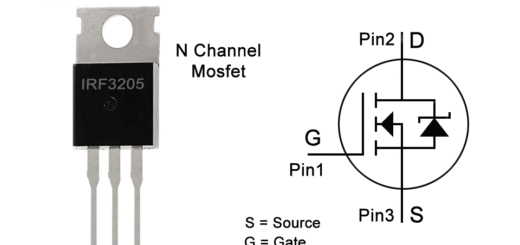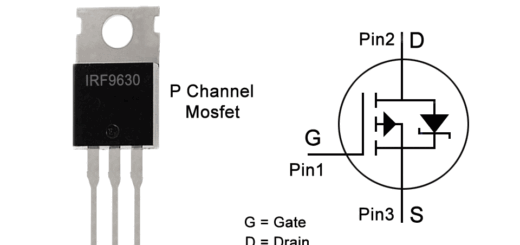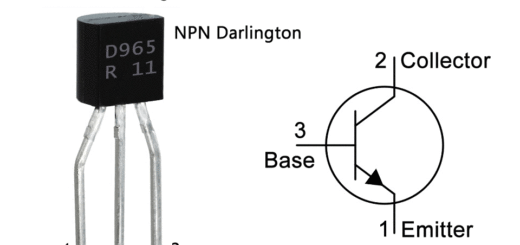2SA836 Transistor’s Pinout, Features, Applications, Equivalents and Other Details.
A836, which has the full part number 2SA836, is a PNP transistor available in a TO-92 package. It is a versatile small-signal transistor and can be used in a variety of applications. In this article, we will explore the 2SA836 transistor’s pinout, features, applications, equivalents, and other details.
Absolute Maximum Ratings:
- Package Type: TO-92
- Transistor Type: NPN
- Max Collector Current(IC): –100mA
- Max Collector-Emitter Voltage (VCE): –55V
- Max Collector-Base Voltage (VCB): –55V
- Max Emitter-Base Voltage (VEBO): –5V
- Max Collector Dissipation (Pc): 200 miliWatt
- Max Transition Frequency (fT): 200 MHz
- Minimum & Maximum DC Current Gain (hFE): 160 – 500
- Max Storage & Operating temperature Should Be: -55 to +150 Centigrade
Replacement & Equivalent
2SA1625, 2SB1256, NTE2342. BC880, 2SA844F, 2SB1212, 2SB1363, TIPP116, 2SB1059, BRY56, 2SA1193, ECG2342.
2SA836 Transistor Explained / Description:
2SA836 is a PNP small signal BJT (Bipolar Junction Transistor) designed for use in low frequency amplifiers with low noise. The transistor has many good features that make it versatile and suitable for use in a variety of other applications. Some of its features are good collector-emitter voltage, transition frequency of 200MHz, DC current gain of 160 to 500 and low noise capability.
The absolute maximum ratings of this transistor are as follows:
Collector-emitter voltage is -55V, collector current is -100mA, collector-base voltage is also -55V, emitter-base voltage is -5V, emitter current is 100mA, collector power dissipation is 200mW, junction temperature is 150 °C and storage temperature is -55°C to 150 °C.
2SA836 is available in two different variations according to its DC current gain, which can be identified with the help of an alphabetical code.
The code “C” means DC current gain of 160 to 320.
The code “D” means DC current gain of 250 to 500.
How to Use This Transistor:
2SC732 has three pins which are emitter, base and collector. The signal that you want to use to control the output load (as we do in a switch circuit) or amplify (as we do in amplifier circuits) will, in both conditions, be applied to the base pin, the emitter pin will be connected to the negative rail of the circuit, and the collector pin, or the final output pin, will be connected to the load you want to drive. (in a switch circuit). In amplifier circuit, the final amplified output will also be received at the collector. Moreover, to build a proper circuit, you also have to use some passive components, and to use them properly, you will require some knowledge and experience of electronic circuits.
Applications:
Audio Amplifiers
Signal Amplification
Sensor Circuits
Audio Preamplifiers
RF Circuits
Darlington Pairs
Switching loads under 150mA
And more…
Safe Operating Guidelines:
To safely operating the transistor always use the transistor under its absolute maximum ratings and stay at least 20% to 30% from these ratings. The operating and storage temperature should not be less than -55°C and more than 150°C.
Datasheet:
To download the datasheet just copy and paste the below link in your browser.
https://www.alldatasheet.com/datasheet-pdf/view/62816/HITACHI/2SA836.html



